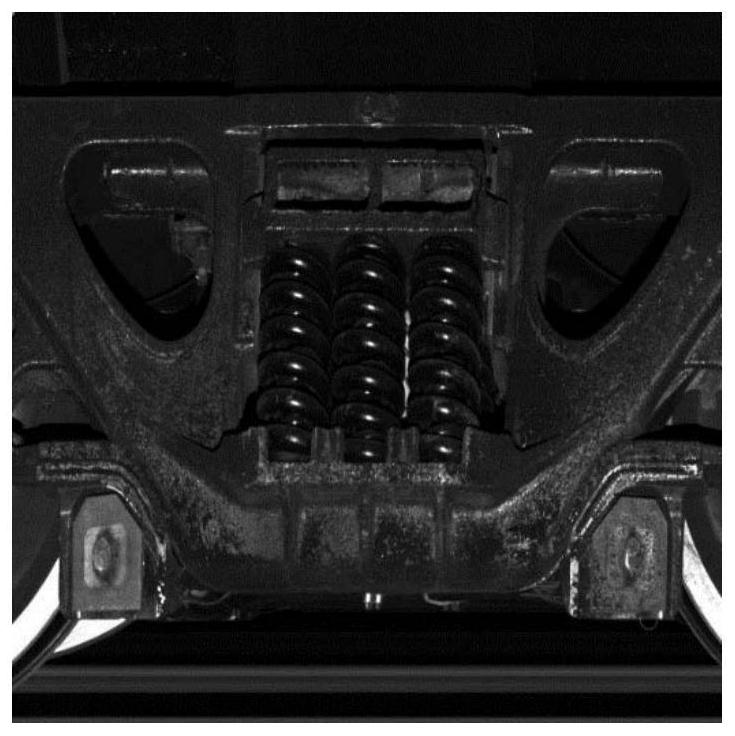Railway locomotive part image edge enhancement method
A railway locomotive and image edge technology, applied in the field of image processing, can solve the problems of poor anti-noise and low robustness, and achieve the effect of strong robustness, good anti-interference and anti-noise ability
- Summary
- Abstract
- Description
- Claims
- Application Information
AI Technical Summary
Problems solved by technology
Method used
Image
Examples
specific Embodiment approach 1
[0053] Specific implementation mode one: refer to Figure 11 Describe this embodiment in detail, a kind of railway locomotive component image edge enhancement method of this embodiment, comprises the following steps:
[0054] Step 1: Obtain the linear array image of the railway locomotive;
[0055] Step 2: intercepting locomotive component sub-images according to the linear image of railway locomotives;
[0056] Step 3: Preprocess the intercepted locomotive component subimages and convert them into three identical image matrices AHE 1 (x,y), AHE 2 (x,y) and AHE 3 (x, y);
[0057] Step 4: AHE the image matrix 1 (x, y) is converted into a spectral image by Fourier transform, and the spectral image is filtered by a Gaussian high-pass filter to obtain an image matrix H(u, v), and then the image matrix H(u, v) is passed through Fourier The leaf inverse transform is converted back to the space domain to obtain the image matrix I(x, y);
[0058] Step 5: AHE the image matrix 2...
specific Embodiment approach 2
[0072] Specific embodiment 2: This embodiment is a further description of specific embodiment 1. The difference between this embodiment and specific embodiment 1 is that the specific steps of preprocessing in step 3 are: first, carry out the process on the intercepted locomotive parts subgraph value filtering, and then perform adaptive histogram equalization processing on the locomotive parts subgraph after median filtering.
specific Embodiment approach 3
[0073] Embodiment 3: This embodiment is a further description of Embodiment 2. The difference between this embodiment and Embodiment 2 is that the median filter is expressed as:
[0074] Mdian(x, y) = median A {f(x,y)}
[0075] Among them, A is a window with a size of 3*3, and f(x,y) is an image matrix.
[0076] First, median filtering is performed on the obtained sub-image to eliminate the isolated noise points generated during the acquisition process of the line array camera. Median filter formula:
[0077] Mdian(x, y) = median A {f(x,y)}
[0078] Among them, A is a window with a size of 3*3, and {f(x,y)} is an image matrix.
[0079] Then, adaptive histogram equalization (AHE) is performed on the image. Since the image collected by the line scan camera will produce different light and dark effects with the different lumens of the area, but the pixel value transformation law between the edge area and the non-edge area is The same, therefore, in order to make the collect...
PUM
 Login to View More
Login to View More Abstract
Description
Claims
Application Information
 Login to View More
Login to View More - R&D
- Intellectual Property
- Life Sciences
- Materials
- Tech Scout
- Unparalleled Data Quality
- Higher Quality Content
- 60% Fewer Hallucinations
Browse by: Latest US Patents, China's latest patents, Technical Efficacy Thesaurus, Application Domain, Technology Topic, Popular Technical Reports.
© 2025 PatSnap. All rights reserved.Legal|Privacy policy|Modern Slavery Act Transparency Statement|Sitemap|About US| Contact US: help@patsnap.com



